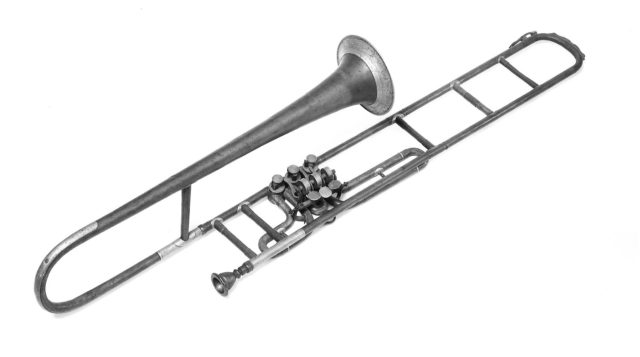Yes valve trombones are good. To begin, I’d like to point out that valve trombones do exist, although they are far outnumbered by trombones that use slides but they exist and they are good.
Both valves and slides provide the same function. They change the length of tubing that is used, and as a result of they produce a sequence of overtones (or harmonics) that players can access by vibrating their lips in different patterns.
The valveless ancestors of the trombone and horn had a limited range. Versions with valves first developed in the nineteenth century. However, the trombone’s ancestor, which dates back to the 15th century, already contained a slide. In actuality, the term “sackbut” is derived from the French words for “pull” and “push,” respectively.
The instrument progressed over the course of time. Despite this, it was still known as a sackbut because of the slide on the side of it. However, over time, the name was altered to trombone. Despite the fact that the word sackbut seems strange, I believe that people appreciate this change.
However, the tenor valve trombone is the most widely used of the valve trombones, which are available in the same sizes as the conventional slide trombone. The valve trombone is available in the same sizes as the traditional slide trombone.
The valve trombone was popular during the end of the nineteenth century. The development of valve and piston technology was advancing, and by that time, there were a plethora of improved slide trombones on the market.
Should i use a valve trombone?
Valves are preferred in some situations, although the trombone’s slide already performs admirably for the majority of music students. The trombone is more dependable than other wind instruments since it does not require as frequent replacement as other wind instruments.
It is also capable of playing lower notes with ease, allowing it to be used as a bass instrument. In addition, trombones don’t have to be as loud as other brass instruments because the slide allows the musician to regulate the pitch and dynamics of his or her sound more readily.
Why is it that a trombone does not have valves?
Trombones do not have valves because they are not required by the instrument. The slide on the trombone allows the player to change the the pitch of the note played on it. This is a more adaptable alternative than valves, which are limited in their ability to produce a wide range of notes. Trombones are also less difficult to tune than other wind instruments, and thus require less maintenance as a result of this.
Valve trombones are typically played by people who are not trombonists but who play other brass instruments. It has retained the majority of its cylindrical shape, which results in a brassier sound than a conical-shaped instrument when played.
Although it has the same layout as a standard trombone, it features a full valve system that allows it to play fast, difficult passages. James Morrison was the one who created it and made extensive use of it. They are frequently employed by wind ensembles and brass bands in the United Kingdom.
Another type of valve trombone is the superbone:
Superbone
The slide and valve system of this uncommon trombone variant distinguishes it from other varieties of trombones on the market. Jazz trombonist and reed player Brad Gowans invented the valide trombone, a valve-slide hybrid. Because the slide didn’t lock, it necessitated the player using both hands.
The Holton Superbone is equipped with a sliding lock that does not need the use of only one hand, allowing players to manipulate the valves and slide with either hand while playing.
Are Trombones popular?
Trombones are a sort of wind instrument that is most commonly found in orchestras and bands. They provide a large, round, and rich sound that can fill an entire orchestral orchestra. Trombones are still commonly employed in many various forms of music, despite the fact that they are not as common as trumpets or saxophones. Because trombones do not have valves, like other instruments, trombone players must be extremely accurate with with their hands.
Is it possible to play the trombone using keys?
In contrast to instruments such as the flute or oboe, which have keys, and instruments like as the French horn and trumpet, which have valves, trombones are chromatic instruments. To the extent that they can play the entire chromatic scale without the use of any buttons, trombones are considered to be similar to the violin or cello in their chromatic capabilities.
Is the trombone the only instrument that has a slide?
Actually, the trombone isn’t the only instrument with a slide. There are also other instruments that have a slide such as the tuba and the soprano trumpets. But the trombone but the trombone is really the best balanced instrument that slide has worked with. It is not like other brass instruments that use valves. The slide has the ability to increase or decrease the length of the pipe.
Final thoughts
Although they aren’t common in every ensemble, trombones are important components for many musical styles. The trombone has a rich, full sound that adds depth and character to a song. The slide, in contrast to valves, is both adaptable and dependable. And although other brass instruments may be louder or easier to maintain, the trombone’s slide still makes it worth using in many different settings.







